Garnets have adorned humanity across cultures for over 5000 years. Discover little-known facts about January birthstone and what makes garnets so beguiling.
Table of Contents
The average reading time is 13 minutes. The article was last updated on 09/06/2024.
| Check out our birthstone articles for each month. |
| February Birthstones |
| March Birthstone |
| April Birthstone |
| May Birthstone |
| June Birthstones |
| July Birthstone |
| August Birthstones |
| September Birthstones |
| October Birthstones |
| November Birthstones |
| December Birthstones |
Introduction to the January Birthstone: Garnet
Garnets are a group of silicate minerals that have been used as gemstones and abrasives for thousands of years. As the January birthstone, garnets signify the vibrant start of a new year.
The name “garnet” comes from the Latin word “Garanatus,” meaning “seedlike,” and refers to the round, bright red seeds of a pomegranate. Early on, ancient cultures worldwide used red garnets as a substitute for rubies. But garnets comprise a group of over 20 minerals, available in every color except blue.
While many garnets are red, other popular natural colors include:
- Green (Tsavorite and demantoid)
- Orange (spessartine)
- Purple (rhodolite)
- Yellow/gold (hessonite)
- Pink (rhodolite)
- Brown (almandine and spessartine)
- Black (andradite)
Garnets range from transparent to translucent. The more transparent and eye-clean a garnet is, the more prized it becomes for Jewelry. Garnets also have a vitreous (glass-like) luster and perfect cleavage along their dodecahedral crystal structure. Their hardness on the Mohs scale ranges from 6.5 to 7.5, making them suitable and durable for Jewelry.
Fun fact: Garnets are so abundant that they can be found in many countries across six continents. Garnets form under various geological conditions, from stream sediments to volcanic rock formations.
Garnet Varieties Found Around the World
There are six main species of garnet, with multiple varieties under each:
1. Pyrope
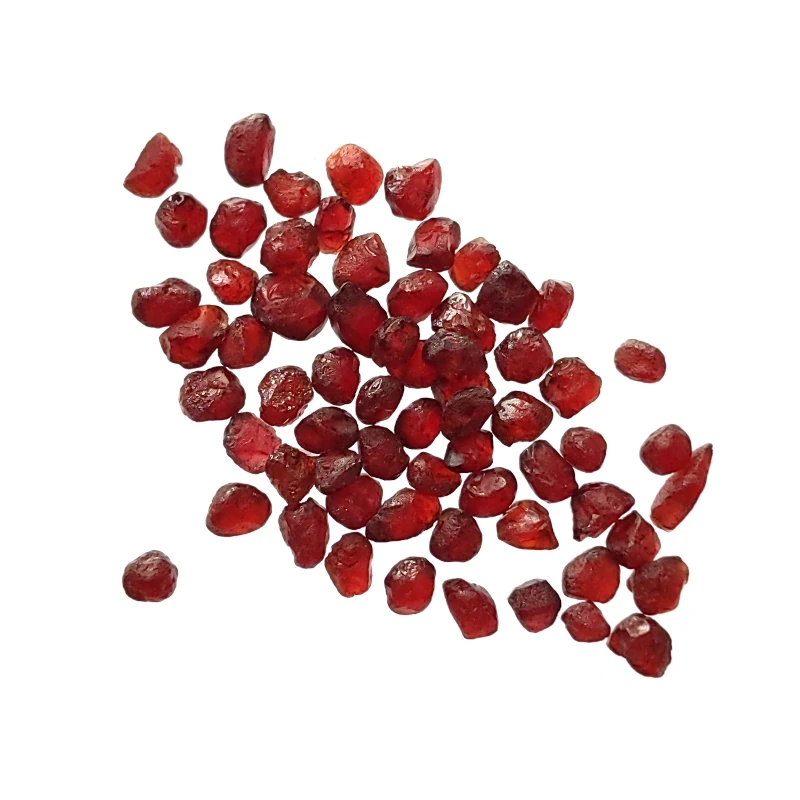
- Deep red magnesium aluminum silicate
- Found in: Czech Republic, South Africa, USA
- Used in: Jewelry
2. Almandine
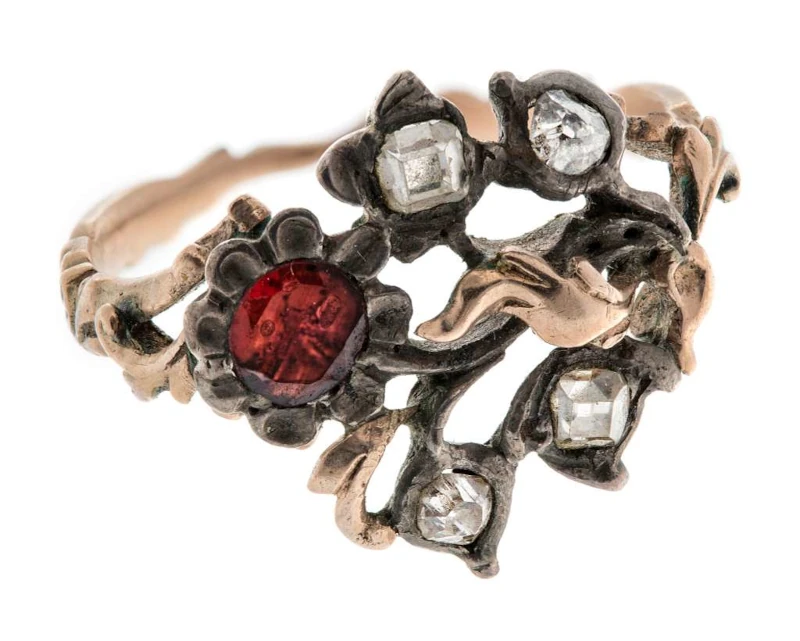
- Red iron aluminum silicate
- Found in: India, Madagascar, Sri Lanka, USA
- Used in: Jewelry, sandpaper, water filtration
3. Andradite

- Yellow, green, brown, and black calcium iron silicate
- Found in: Canada, Italy, Madagascar, USA
- It is used in Jewelry and sandblasting.
4. Grossular
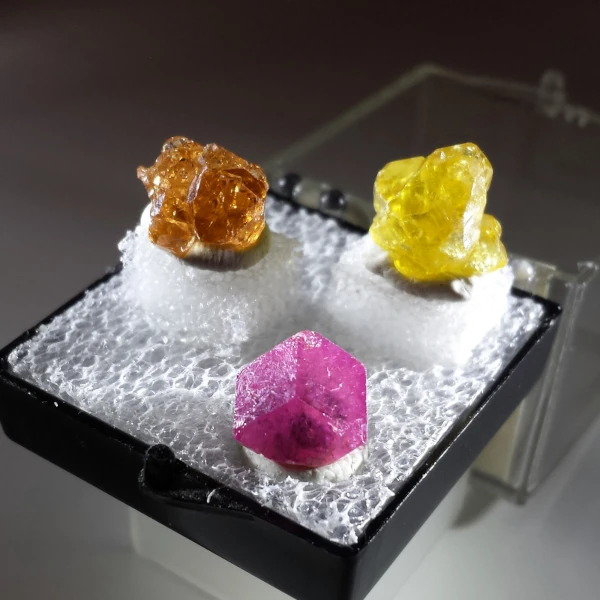
- Yellow, green, and pink calcium aluminum silicate
- Found in: Canada, South Africa, USA
- Used in: Jewelry
5. Spessartine
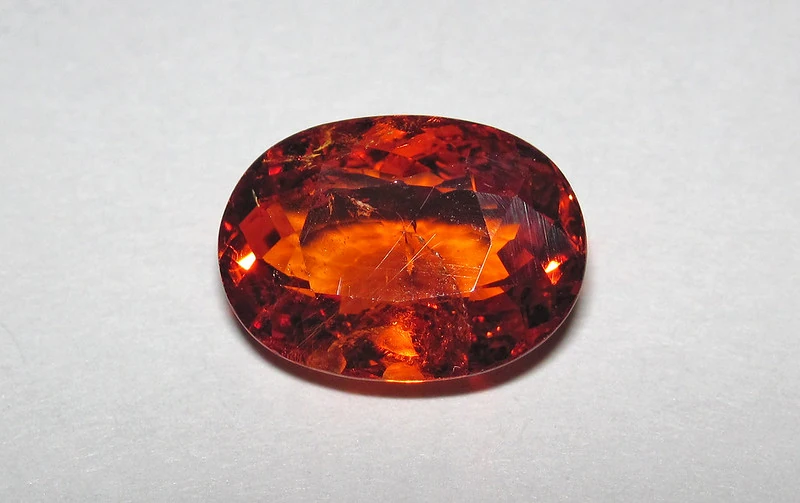
- Orange, red, and brown manganese aluminum silicate
- Found in: Brazil, Namibia, USA
- Used in Jewelry, abrasives
6. Uvarovite
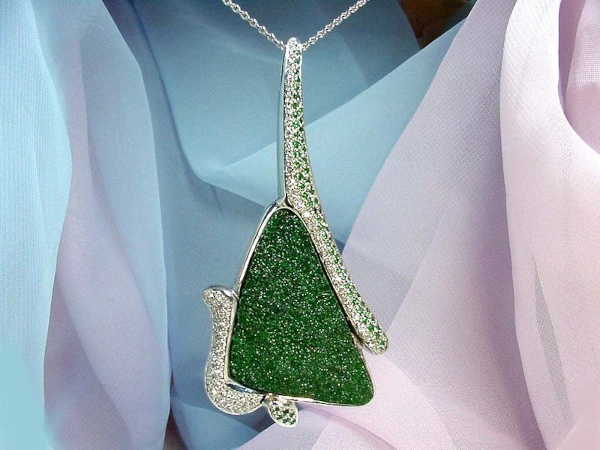
- Bright green calcium chromium silicate
- Found in: Canada, Finland, Russia, USA. Used in Jewelry, carvings
The different garnet species can be mixed, resulting in other varieties like:
- Rhodolite: Purple garnet, a mix of pyrope and almandine
- Malaya: Pink-orange garnet, a mix of pyrope and spessartine
- Color change: Blue to purple/pink, a blend of spessartine and pyrope
There are also garnet hybrids such as Tsavorite, a green grossularite garnet, and vibrant green demantoid, an andradite garnet. These unique garnets are mainly found in Kenya and Russia.
Symbolic Meanings of Garnet Gemstones
Garnets have carried important symbolism and meaning since ancient times.
In Greek mythology, a pomegranate emerging from the Underworld was seen as a sign of eternal life and rebirth. Ancient warriors believed garnets made them invincible, inspiring loyalty, trust, and truth. Hebrew scripture speaks of the garnet making up one of the 12 gemstones on Aaron’s breastplate, signifying the 12 tribes of Israel.
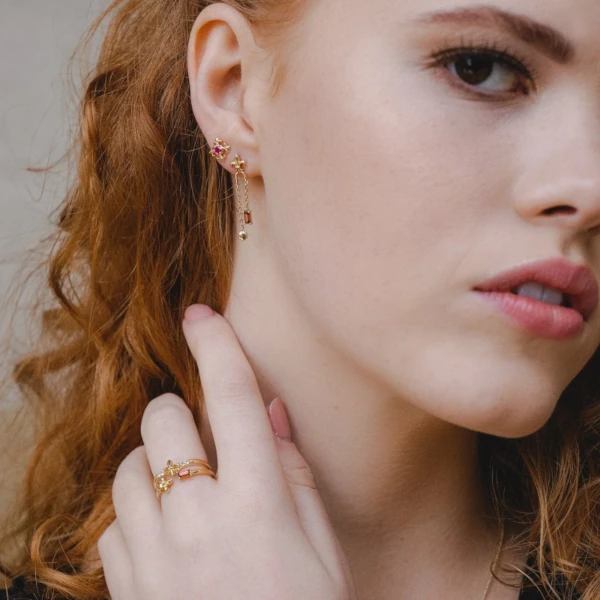
Check out these Garnet drop earrings here.
In more modern history:
- Red garnets came to represent fire, faith, courage, passion, determination
- People exchanged garnet Jewelry or gifts as a symbol of undying devotion, loyalty, and true friendship
- Green garnets represent hope, prosperity, rebirth, and growth
- Yellow/gold garnets symbolize sunlight, joy, energy, positivity
- Purple garnets signified wisdom, healing, spirituality
Because garnets were believed to heal heart and lung diseases, stop bleeding, cure inflammation, and protect from evil, they were also carried as protective talismans.
Today, people still give garnet birthstone jewelry as gifts to demonstrate affection and love. Garnets make meaningful keepsakes for the wedding anniversaries of the 2nd, 6th, and 19th.
Garnet Jewelry Crafting and Care
Garnets selected for Jewelry go through multiple steps:
- Rough crystals are mined from geologic deposits
- They are sorted, and the gem-quality material is selected
- The garnets get cut into popular shapes like rounds, ovals, cushions
- Facets are precisely placed to maximize brilliance and fire
- The gemstones are polished to a smooth, glassy finish
- Finally, the garnets are set into jewelry mountings like rings, pendants, and earrings
Pro tip: Choose jewelry settings that protect vulnerable corners and allow light to enter from all sides. Bezel settings and halo mountings beautifully show off the cushion, oval, or round faceted garnets.
To clean garnets at home, avoid using ultrasonic cleaners or heat. Instead:
- Rinse in warm, sudsy water with a drop of dish soap using a soft brush
- Gently pat dry with a soft, lint-free cloth
Store garnets separately from harder gems to prevent scratches. Wrap them in soft fabric when putting them away. Bring garnet Jewelry to a gemologist annually for professional checks.
Where to Buy Natural Garnet Gemstones
The best places to buy untreated, ethically sourced natural garnets:
- Online retailers like Gem Rock Auctions or AGS Gems
- Directly from gemstone cutters like Jeffrey Hunt
- In-person jewelers like Green Lake Jewelry Works
When shopping for garnets, prioritize color, clarity, cut, and carat weight:
- Color: The more affluent the saturation, the better. Green demantoids should be a vivid grass or emerald green.
- Clarity: Eye-clean or very slightly included. No dark spots are visible without magnification.
- Cut quality: Precise faceting with excellent polish and symmetry.
- Sizes and weights: Smaller accent stones range from 0.5 to 5-10 carats for center stones.
Price can vary drastically depending on the above criteria. As a baseline:
- Smaller pyrope or almandine garnets can sell for $5-$30 per carat
- Large pyrope, rhodolite or spessartine over 5 carats may cost $500 to $1000+ per carat
- Rare green Demantoid or Tsavorite over 1 carat could start around $2000+ per carat
How to Tell True Garnets Apart from Lookalikes
Natural garnets have unique properties that differentiate them from common simulants and synthetics:
- Refractive index – Garnets = 1.71 to 1.94. Glass/spinels = lower, around 1.5 to 1.7
- Specific gravity – Garnets = 3.5 to 4.3. Glass has a lower SG of around 2.6.
- Thermal conductivity – Garnets have higher heat/cold sensitivity than glass, which barely responds
- Trichroism/pleochroism – Garnets never display this color change phenomenon, but synthetics might
Common garnet lookalikes include:
- Glass – Heavy, brittle, lower RI
- Spinel – Slightly lower RI of 1.71 but no cleavage planes
- Pyrope-Almandine Quartz Doublets – Detectable glue seam under magnification
- Synthetic Garnet – Gas bubbles, curved striae
If purchasing expensive garnets, always ask for lab certification from reputable gem labs like:
- GIA – Gemological Institute of America
- AGS – American Gem Society
- IGI – International Gemological Institute
Well-respected jewelers will happily show these certs and examine stones under magnification to help you identify genuine garnets.
Interesting Historical Uses of Garnets
Garnets have served various purposes since ancient civilizations began using them:
5000 BC – Ancient Egyptians used garnets in Jewelry and as inlays in Egyptian burial tombs. Pharaohs of earlier dynasties discovered garnet necklaces and signet rings.
400 BC—Ancient Greeks traded and wore garnets. Many worn engraved garnet Greek rings featuring mythological designs still survive today.
1st century AD – The Roman Empire incorporated red garnets into official signet rings to stamp wax seals on documents. Bohemian garnet jewelry became popular across Roman territories.
11th century—Anglo-Saxons and Vikings used red garnet pendants set in gold as wealth symbols. Garnet cloisonné jewelry, like brooches and buckles, was typical in northern Europe.
Large garnet gemstones were prominently featured in statement rings and pendants among European royalty and the wealthy elite during the 18th-century Baroque era.
Victorian era – Red garnet jewelry grew popular again after a garnet and diamond suit belonging to Queen Victoria was displayed at the 1851 Great Exhibition.
Today, Garnets are commercially used as industrial abrasives for waterjet cutting, sandblasting, wet grinding, and ceramic polishing thanks to their durability, which measures 6.5 and 7.5 on the Mohs scale.
Garnets in Antiquity:
- Set into swords, daggers, and armor as magical protective talismans
- Powdered and made into medicinal elixirs to cure ailments
- Carved into jars, vases, cups, relic boxes – like a warrior’s seal made of garnet found in Mycenae
- Garnet arrowheads and spearheads excavated across the world
- Garnet sun gods, rings, discs, signets – all serving ceremonial purposes
Garnets have an astonishing history spanning over 5,000 years! From ancient medicines to modern abrasives, garnets have continued shining brightly through the ages.
How to Style Garnet Jewelry for Different Outfits
Want to wear your beautiful garnet birthstone jewelry but not sure how? Here’s how to make garnets work with any outfit:
Casual Daytime

Check out these Oval Garnet Stud Earrings here.
- Garnet stud earrings
- Simple garnet pendant necklace
- Stacked garnet statement rings
- Red garnet bracelet
==> Wear with jeans, sweaters, casual dresses
Business Professional
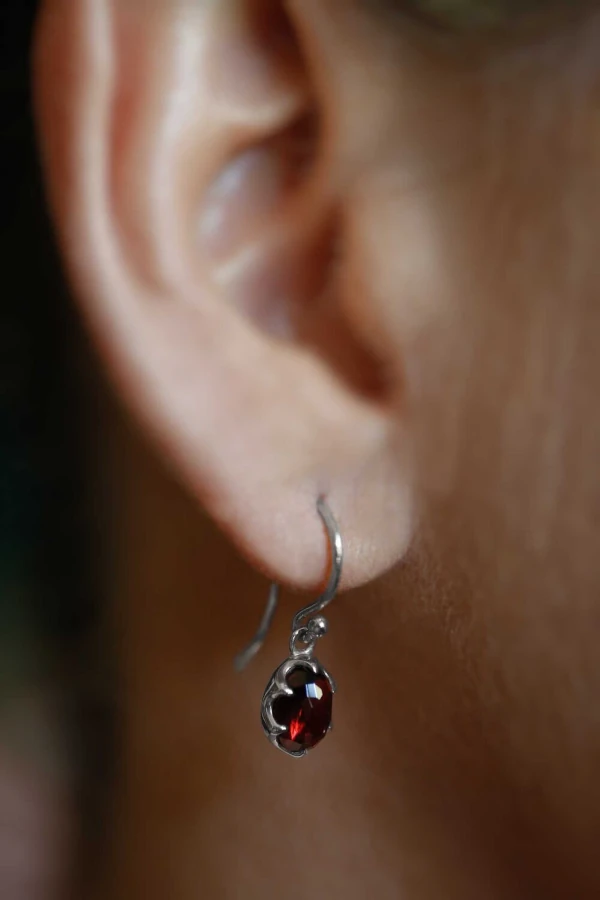
Check out these Garnet Drop Earrings in Rose, White, or Yellow Gold here.
- Demantoid garnet drop earrings
- Single garnet ring
- Tsavorite garnet necklace
- Diamond and garnet cufflinks
==> Pair with suits, blouses, trousers, pencil skirts
Cocktail Party

Check out these Garnet Chandelier Earrings here.
- Chandelier garnet earrings
- Bold garnet cocktail ring
- Embellished garnet bracelet
- Rhodolite garnet tennis bracelet
==> Coordinate with Little Black Dress or gowns
Pro tip: Let your garnet jewelry be the focal point. Avoid competing loud prints or other statement pieces. Keep the overall look clean and modern.
Check out how models rock garnets on the red carpet:
Anne Hathaway at the 2021 Golden Globes wearing over 450 carats of reddish-pink oval Mozambique garnets by Bvlgari
Caring for Garnet Jewelry Through Generations
Garnets are relatively soft, rating 6.5 to 7.5 on the Mohs scale. Treat them gently for maximum longevity:
- Storage: Wrap pieces separately in soft fabric or slot into compartmented boxes to prevent scratching/tarnishing
- Cleaning: Use warm water, mild soap, and soft brush; rinse/pat dry thoroughly after wearing
- Maintenance: Take garnet Jewelry to a gemologist annually for professional ultrasonic cleaning and stone/mounting checks
By caring for garnet heirlooms properly, you can preserve and hand them down for generations, along with beautiful family memories.
Some ideas for re-fashioning antique garnet pieces into modern looks:
- Reset old garnet stones into updated earring/pendant mountings
- Combine garnet gems from different fragments into a new custom ring or bracelet
- Display intricately carved garnet antiques as fascinating curiosities
Sparkling Garnet Gemstones Wrap-Up
Garnets make a vibrant start to the new year as January’s beautiful birthstone. These mystical red stones have carried symbolic meaning for ages, making meaningful keepsakes, whether given as gifts or worn as Jewelry.
Garnets comprise a diverse group of minerals, found on almost every continent and available in colors beyond red, like green, pink, and yellow. Jewelry lovers today can choose from many types of natural garnets—fiery pyropes, purple rhodolites, fluorescent demantoids, golden hessonite, and more!
With proper care, stunning garnet gems can withstand daily Wear or become priceless heirlooms passed down for generations through families. As lovely as pomegranate seeds and as enduring as humanity’s passion for these gemstones, vibrant garnets will always be in our jewelry boxes and hearts!
Frequently Asked Questions about the January Birthstone.
What’s the difference between garnets and rubies?
Rubies are various corundums, while garnets are an entirely separate mineral species. All rubies are red, but garnets come in every color. Genuine rubies are also much rarer and costlier than common garnets.
Is there such a thing as a blue garnet?
Yes! A rare, natural ‘blue’ garnet discovered in Madagascar exhibits a gorgeous blue-green or deep teal color. Due to their chemical composition, these garnets change color from blue to purplish-red in incandescent lighting compared to LED/fluorescent lighting.
What garnet color is most rare?
Green demantoid andradite garnets are exceptionally rare. Discovered in Russia’s Ural mountains during the mid-1800s, they display a vivid grass-green color caused by chromium. Horsetail inclusions are also part of their exotic appeal.
Which country is best known for garnets?
There is no single country best known for garnets because many species are found worldwide. But Bohemia (Czech Republic) has been renowned for its abundant pyrope garnets since medieval times. African countries like Kenya, Tanzania, and Madagascar produce prized green grossularite and andradite garnet gems today.
How can you tell if a garnet is genuine?
Have an experienced gemologist examine it. They will check for natural identifying traits like dodecahedral crystal structure, abrasion resistance, density, refractive index, and spectral properties. Lab reports from reputable gemological institutes also help determine if a garnet has been treated or is synthetic.
What is a garnet’s spiritual meaning?
For thousands of years, garnets symbolized light, loyalty, truth, passion, determination, creativity, positivity, and protection to those believing in its spiritual powers—some associated garnets specifically with the strength of friendships or commitments to loved ones when exchanged as gifts. Garnet gemstones also represented pomegranate seeds from classical myths – promising future joy, success, and even immortality.

Pashalis Laoutaris
Fashion Blogger
I am a professional writer, fashion blogger, and owner of the site https://laoutaris.com. I have over 20 years of experience as a salesperson in the fashion industry and 10 years of experience as a fashionista. I consider myself a true fashionista. I write daily blog articles about fashion, tools and converters, and everything you need to know about current trends.
Share this article
Our Latest Articles
Laoutaris Recommends

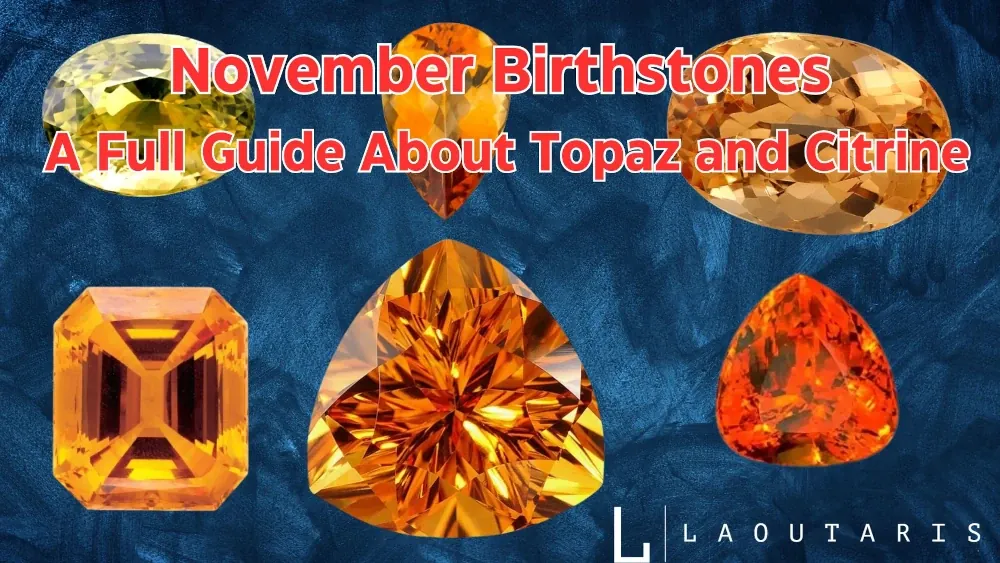
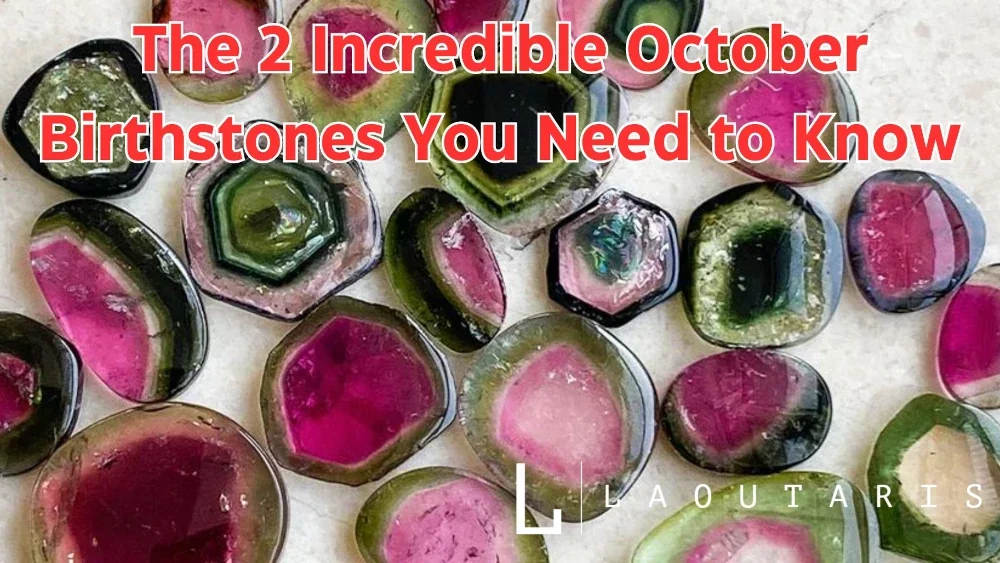


Fantastic site A lot of helpful info here Im sending it to some buddies ans additionally sharing in delicious And naturally thanks on your sweat